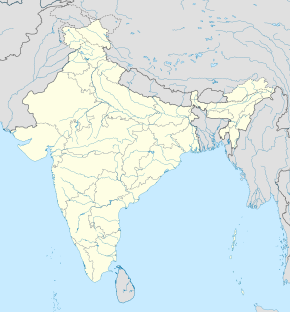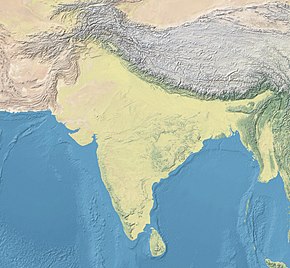Atai Khan's Attack on Meerut
Script error: No such module "Draft topics". Script error: No such module "AfC topic".
| Atai Khan's Attack on Meerut | |||||||||
|---|---|---|---|---|---|---|---|---|---|
| Part of Third Battle of Panipat | |||||||||
| |||||||||
| Belligerents | |||||||||
|
|
| ||||||||
| Commanders and leaders | |||||||||
|
|
| ||||||||
| Strength | |||||||||
| 10000 Cavalry | 10000 Cavalry | ||||||||
| Casualties and losses | |||||||||
| Unknown |
2000 Maratha Soldiers Killed 20000 Marathas were slain at the camp | ||||||||
The Atai Khan's attack Meerut was a military Skirmish initiated by Emperor Ahmed Shah Durrani in an attempt to capture Govind Pant Bundele, who had taken refuge in Meerut.[3][4]Emperor Ahmad Shah Abdali dispatched Atai Khan with a small army of Afghans to Meerut. Govind Pant Bundele was ready to face the Afghan forces with his light cavalry of ten thousand soldiers. A fierce battle ensued between the two adversaries in Meerut.
Background[edit]
On the afternoon of October 26th, a significant battle erupted in Samalkha[3]. The Afghan forces were under the direct command of the emperor, while the Marathas were led by Govind Pant Bundele.[5]The Afghans gained victory in the battle, prompting Govind Pant Bundele to be executed.[3] After the confrontation, Govind Pant Bundele sought refuge in Meerut.[3] Subsequently, the emperor deployed Atai Khan, along with the elite cavalry, to apprehend Govind Pant Bundele in Meerut.[3][6]
The Battle[edit]
In later encounters, Govind Pant Bundele, together with 10,000 informally trained cavalry who were not officially enlisted as soldiers, was involved in a foraging mission with around 500 men.[5] They were ambushed by an Afghan force near Meerut, resulting in a clash in which Govind Pant Bundele was killed by Atai Khan.[7][8] This was further aggravated by the loss of a detachment of 2,000 Maratha troops who had left Delhi on a mission to transport funds and provisions to Panipat.[9][10]
Aftermath[edit]
The passing of Govind Pant Bundele greatly distressed Sadashiv Rao Bhau.[11] He mourned the loss of around 22000 inhabitants within the Maratha empire.[3] Subsequently, the Maratha armies confronted Afghan forces at the battlefield of Panipat, resulting in a historical defeat.[12]
This article "Atai Khan's Attack on Meerut" is from Wikipedia. The list of its authors can be seen in its historical and/or the page Edithistory:Atai Khan's Attack on Meerut. Articles copied from Draft Namespace on Wikipedia could be seen on the Draft Namespace of Wikipedia and not main one.
- ↑ Kadam, Vasant S. (1993). Maratha confederacy. Munshiram Manoharlal Publishers. p. 68. ISBN 9788121505703. Search this book on

- ↑ Joglekar, Jaywant (2006). Decisive Battles India Lost (326 B. C. to 1803 A. D.). Lulucom. pp. 90–91. ISBN 9781847283023. Search this book on

- ↑ 3.0 3.1 3.2 3.3 3.4 3.5 Barua, Pradeep (2005-01-01). The State at War in South Asia. U of Nebraska Press. p. 60. ISBN 978-0-8032-1344-9. Search this book on

- ↑ Andhare, B. R. (1984). Bundelkhand Under the Marathas, 1720-1818 A.D.: A Study of Maratha-Bundela Relations. Vishwa Bharati Prakashan. p. 119. Search this book on

- ↑ 5.0 5.1 Srivastava, Ashirbadi Lal (1966). The Mughal Empire, 1526-1803 A.D. S. L. Agarwala. pp. 476–477. Search this book on

- ↑ Haryana State Gazetteer. Haryana Gazetteers Organisation, Revenue Department. 2001. p. 230. Search this book on

- ↑ The Cavalry Journal. 1932. p. 62. Search this book on

- ↑ Haryana State Gazetteer. Haryana Gazetteers Organisation, Revenue Department. 2001. pp. 229–230. Search this book on

- ↑ Barua, Pradeep (2005-01-01). The State at War in South Asia. U of Nebraska Press. p. 60. ISBN 978-0-8032-1344-9. Search this book on

- ↑ Sainik Samachar. Director of Public Relations, Ministry of Defence. 1965. p. 23. Search this book on

- ↑ Haryana State Gazetteer. Haryana Gazetteers Organisation, Revenue Department. 2001. pp. 229–231. Search this book on

- ↑ Mehta, Jaswant Lal (2005-01-01). Advanced Study in the History of Modern India 1707-1813. Sterling Publishers Pvt. Ltd. p. 282. ISBN 978-1-932705-54-6. Search this book on




